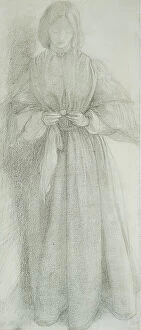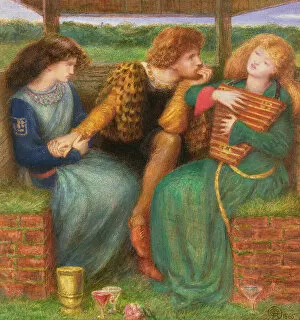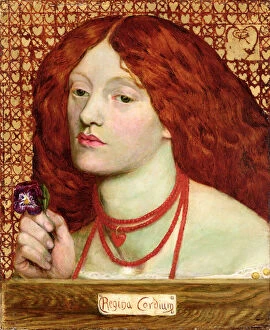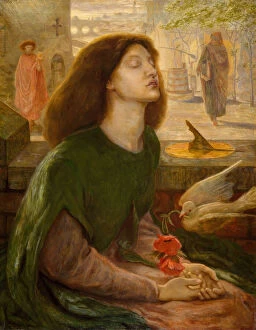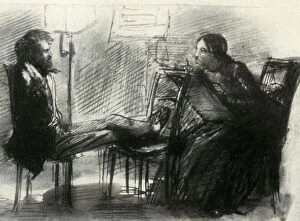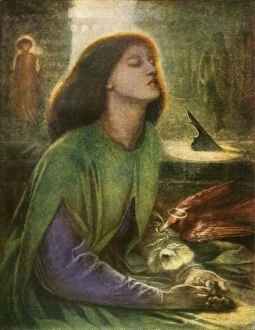Elizabeth Siddal Collection
"Elizabeth Siddal: A Muse Immortalized in Art" Elizabeth Siddal, a captivating figure of the Pre-Raphaelite movement
All Professionally Made to Order for Quick Shipping
"Elizabeth Siddal: A Muse Immortalized in Art" Elizabeth Siddal, a captivating figure of the Pre-Raphaelite movement, continues to enchant art enthusiasts with her ethereal beauty and enigmatic presence. In "Portrait of Elizabeth Siddal, in Profile to the Right, " rendered delicately in watercolour, we glimpse her graceful profile and contemplate the depths hidden within. "The Merciless Lady" portrays Siddal's complex persona through vibrant watercolours and bodycolour on paper. This striking piece captures both her vulnerability and strength, leaving us intrigued by the contradictions that lie beneath her serene exterior. In "Regina Cordium, " depicted on a panel, we witness an intimate portrayal of Siddal as she gazes into eternity. The artist skillfully conveys her introspection and melancholic longing for love—a sentiment that resonates across time. Perhaps one of the most iconic representations is found in "Beata Beatrix. " Painted with oil on canvas, this masterpiece immortalizes Siddal as Dante Gabriel Rossetti's beloved Beatrice. Her haunting gaze reflects both sorrowful yearning and transcendent spirituality—an embodiment of divine beauty frozen forever on canvas. Beyond being a muse herself, it also possessed artistic talent. In "Elizabeth Siddal playing a Stringed Instrument, " sketched with graphite on off-white paper, we see glimpses of her own creative spirit intertwining with Rossetti's inspiration. Through various portraits such as "Portrait seated" or captured at moments like when she stands pensively at a window in 1854—both created by Dante Gabriel Rossetti—we are granted access to different facets of this enigmatic woman's life; each stroke revealing more about her inner world. Siddal's influence extended beyond traditional mediums; even stained glass became an avenue for capturing her essence. In "Adam and Eve after the Fall, " we witness how she becomes a symbol of redemption and the eternal struggle between good and evil.

